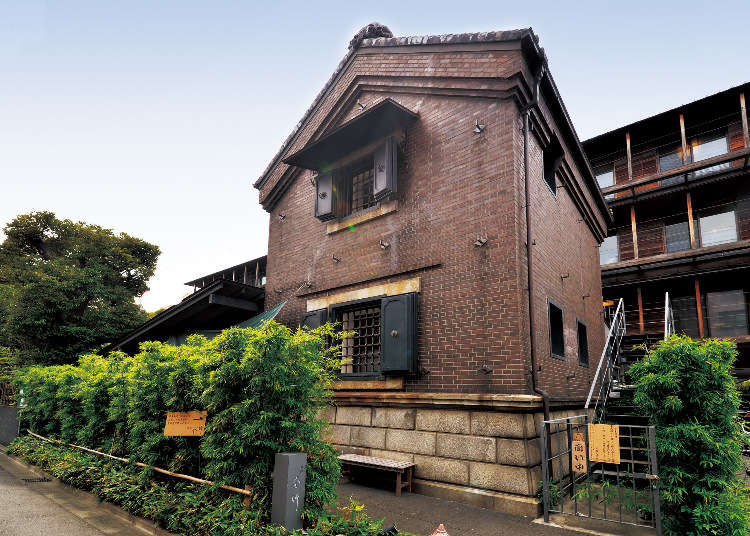
Kamachiku: Enjoy Delicious Kamaage Udon in a Historical Stone Warehouse
- Written by: Miyu Shimada
In the downtown area of Tokyo, Nezu, lies an old building brimming with history, unlike any structure you'd find in today's modern architecture. That building is Kamachiku, a famous kamaage udon restaurant that inhabits a renovated, old stone warehouse built over 100 years ago.
Involved in its development was none other than Kengo Kuma, the world-famous Japanese architect who also designed the Japan National Stadium.
Today we will visit Kamachiku, a shop that offers delicious Japanese cuisine, and a look into some famous, historic architecture.
TOP (Photo courtesy of Kamachiku)
Kamachiku is a famous kamaage udon shop set in a historical building in Tokyo's Nezu neighborhood
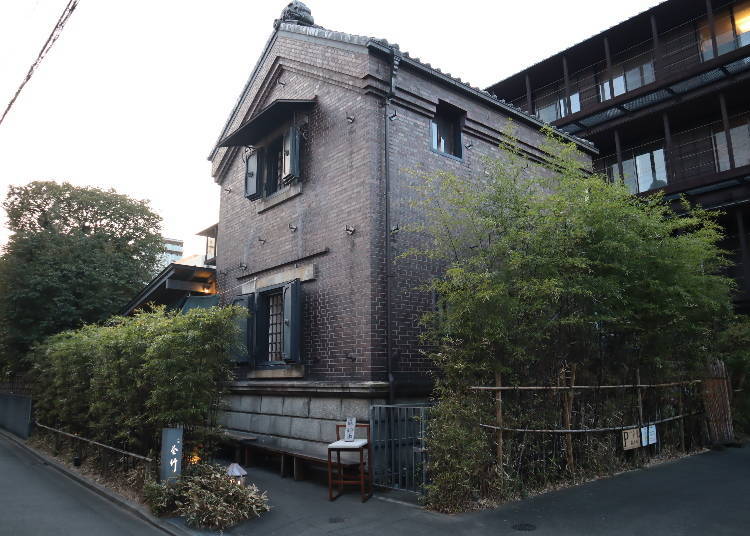
Of all the historical areas of Tokyo, Nezu has a particularly old-fashioned and nostalgic vibe. In recent years, the Yanesen area, along with Yanaka and Sendagi, has garnered attention from Japanese people and foreign tourists alike.
What you'll also find in Nezu is the famous kamaage udon shop, Kamachiku, which resides in a historical structure designed by the renowned architect, Kengo Kuma.
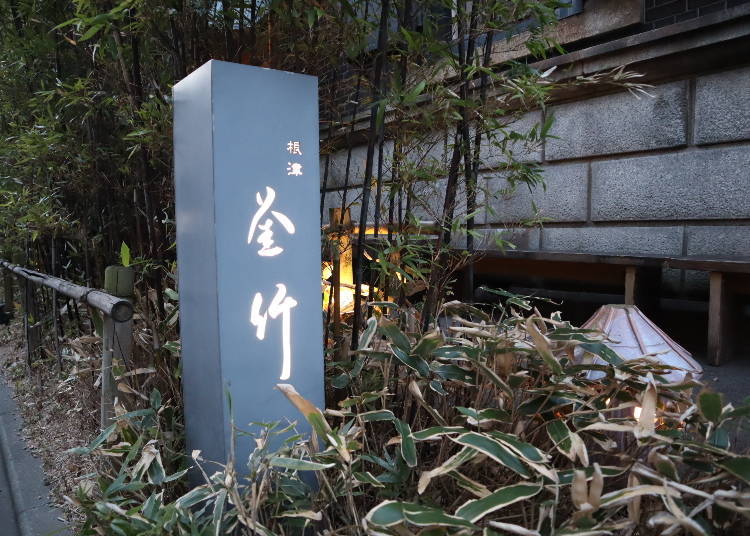
The current owner is a second-generation shopkeeper who inherited this specialty kamaage udon shop from his father, who owns the original shop established in Osaka. Kamachiku has also held the Michelin Bib Gourmand title for three consecutive years since appearing in Michelin Guide Tokyo 2015.
Designed by Kengo Kuma, the shop is set in a 110-year-old stone warehouse
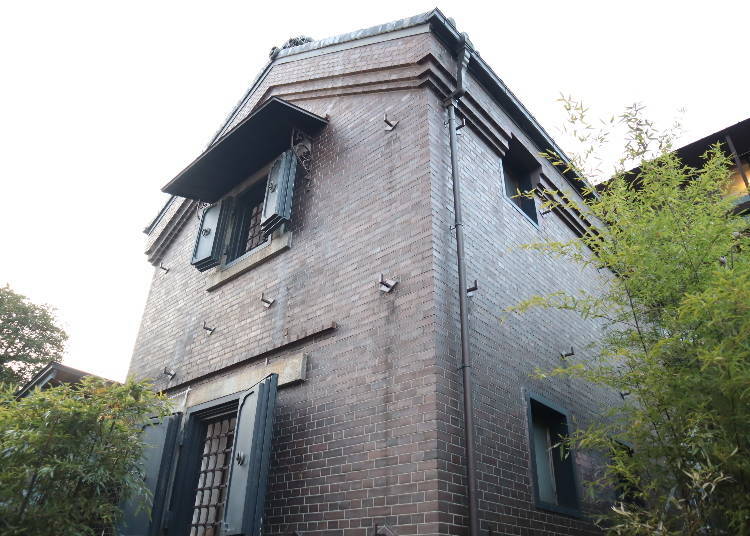
Kamachiku isn't famous only for its udon. The shop's inside and outside also draw much attention. This building, remodeled from an old stone warehouse, was designed by Kengo Kuma, a world-famous Japanese architect who also designed the Japan National Stadium.
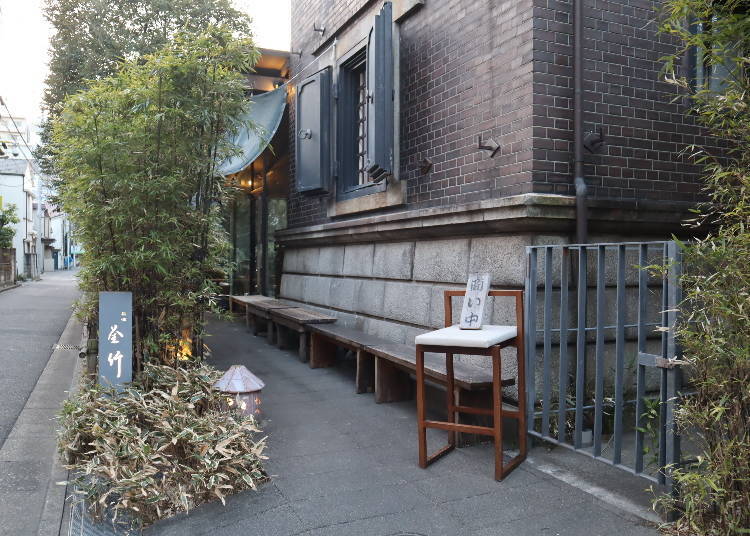
What led to the birth of an udon shop in a stone warehouse?
We spoke to the shop owner, Mr. Hiraoka, about the history of the stone warehouse, and how it was selected as the site of his udon shop.
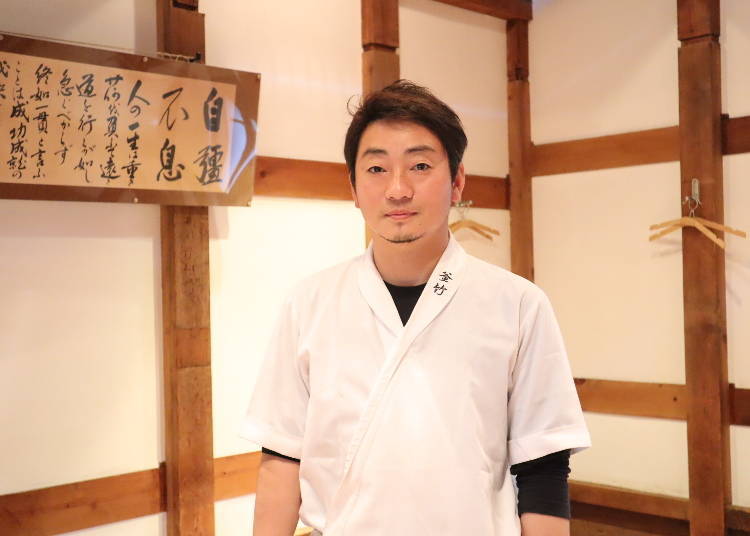
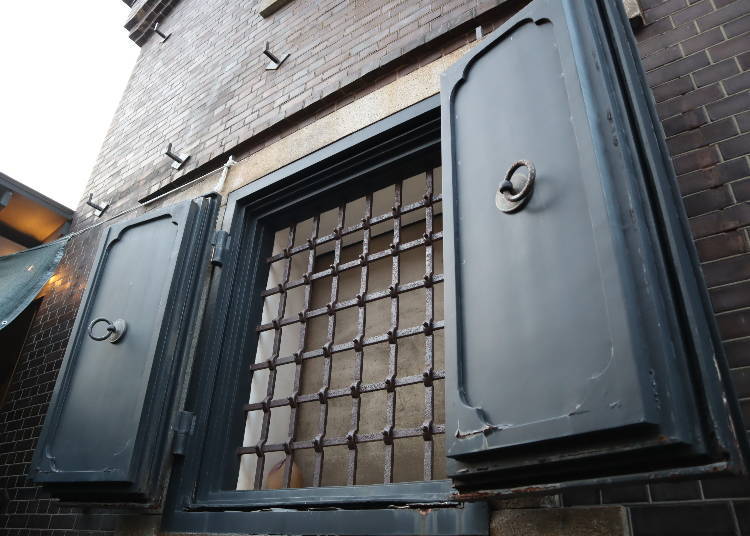
-When was this stone warehouse built?
"This stone warehouse was built in 1910, over 110 years ago. It was then relocated here and refurbished. It was used as both a warehouse and sleeping quarters in the past."
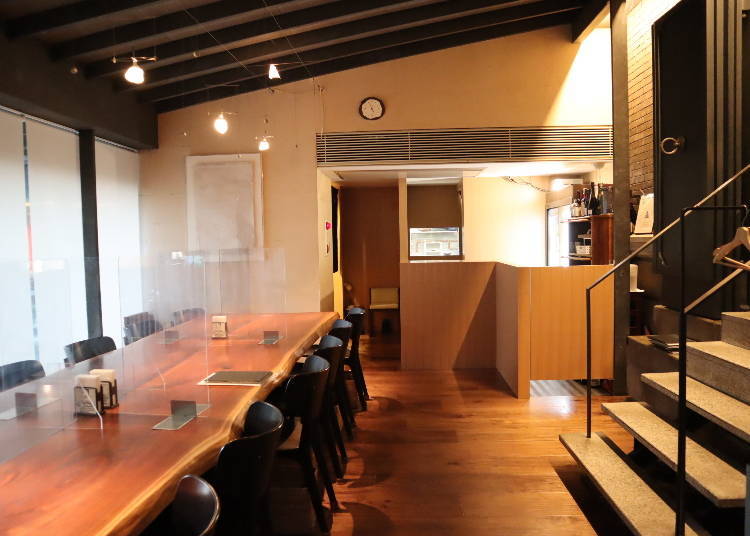
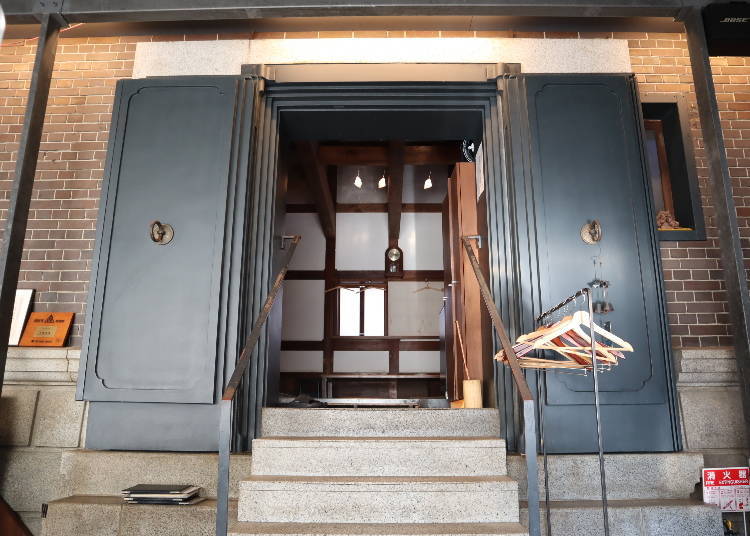
-How were you able to open up shop here?
"One of the regular customers at my father's Osaka shop planned to build a home for the elderly here in Tokyo, and he wanted us to open a branch on the neighboring premises. The elderly home next door was also built by Kengo Kuma per the owner's request. It's thanks to this connection that I had happened upon the chance to open my shop in such a historic stone warehouse."
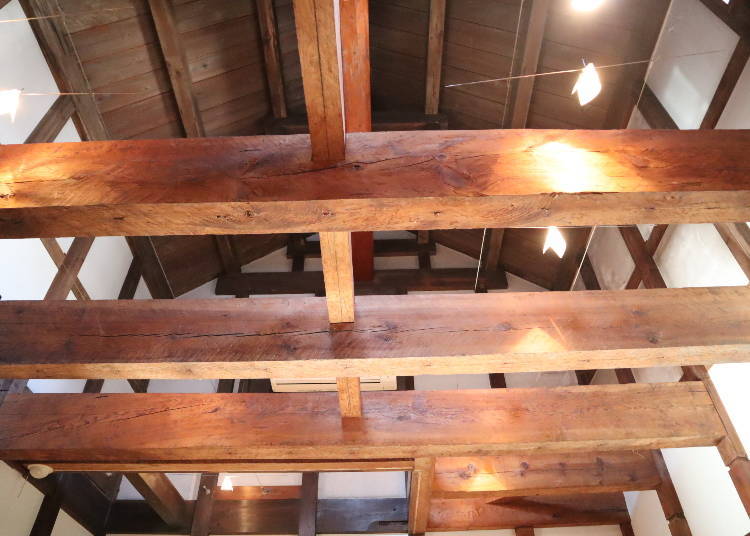
-It's amazing to see such high ceilings and the beams left as they were.
"Originally, this was a two-story structure, but the ceiling was removed. It really adds to the atmosphere! However, as they absorb heat, one drawback of the shop is that it gets sweltering in the summer and cold in the winter (laughs)."
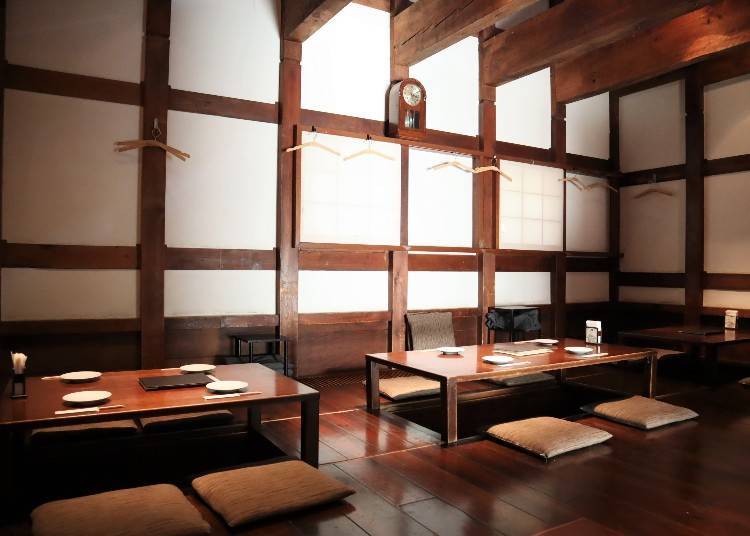
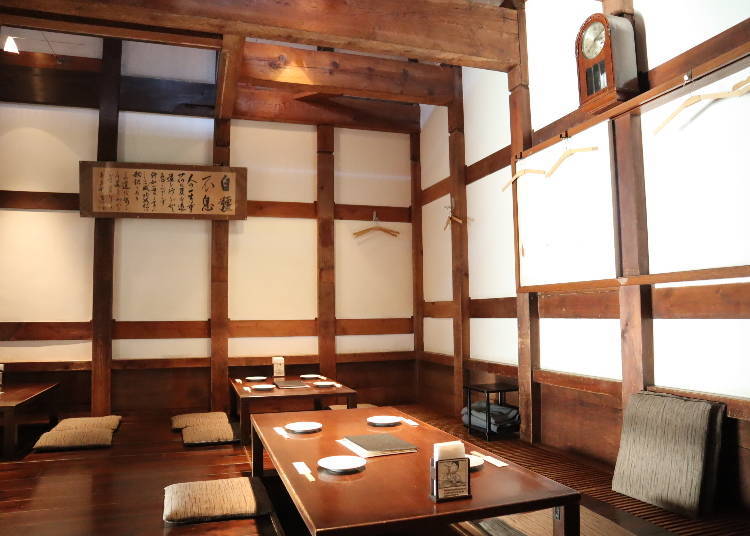
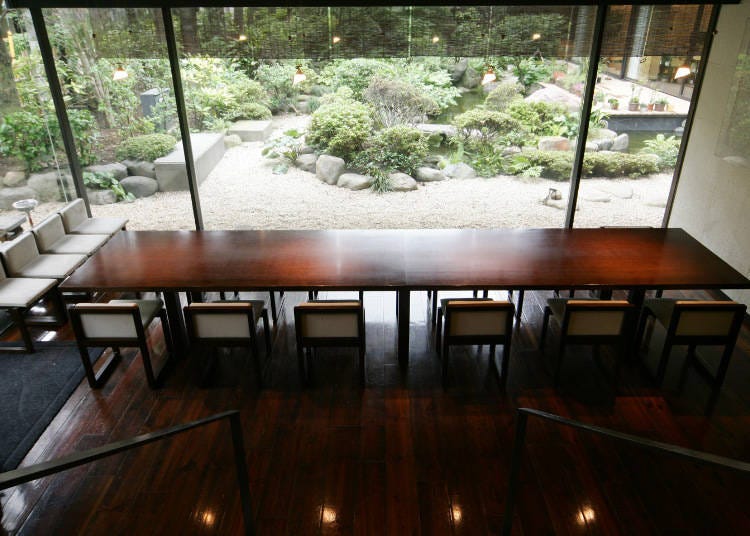
Authentic Kamaage Udon, Japanese Cuisine, and Sake
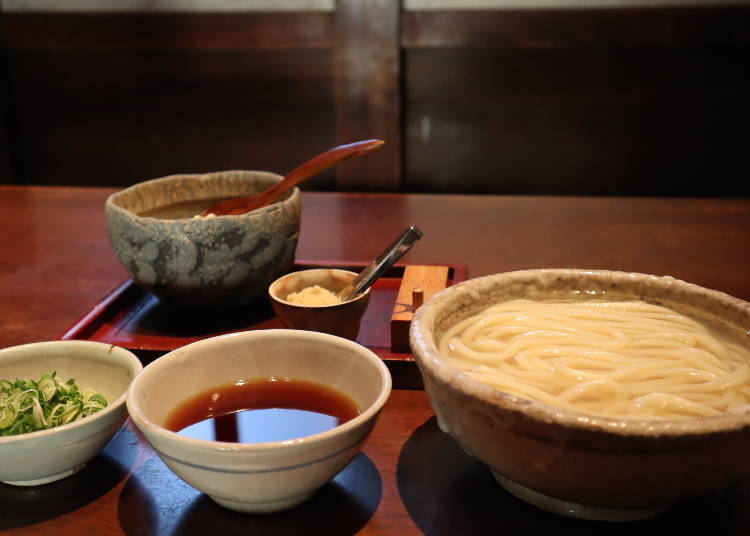
-Please tell us about the shop's specialties.
"Our shop specializes in sake and kamaage udon. The kamaage udon can be ordered hot or cold. We also have a variety of sake that pairs well with it."
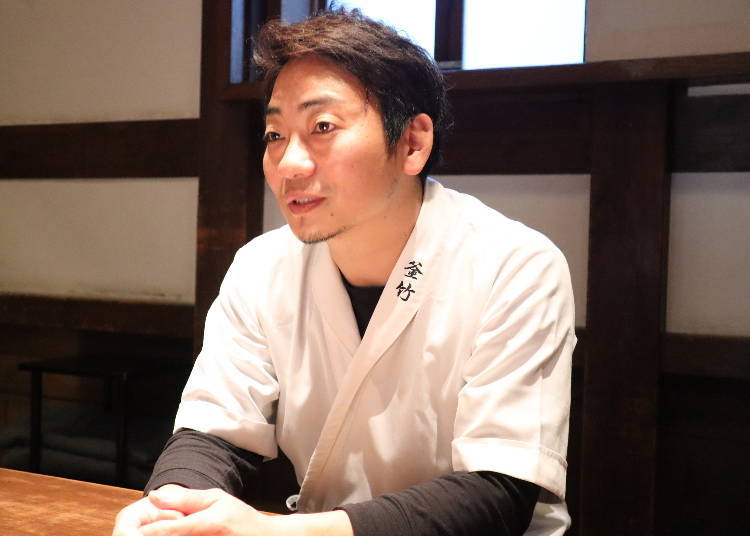
-Is there anything you're particular about when making Kamachiku's udon?
"We make the best use of the ingredients' flavor without overdoing it. It's not about using expensive or special ingredients. It's about the balance between all the ingredients, such as the flour, water, and soy sauce."
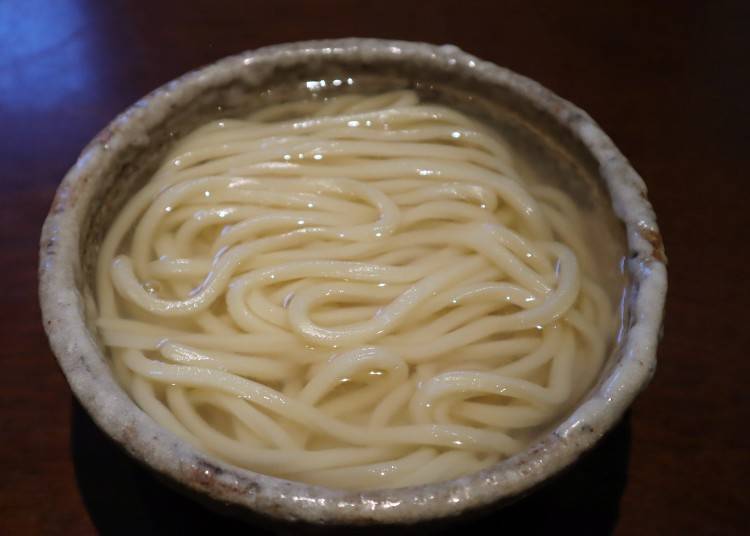
-What do you find most difficult about making udon?
"We're always thinking about our customers, even as we cook. Skills can be improved with practice, but the real challenge is making sure we always serve the best udon to our customers.
"Once we receive an order, we look at the customer and constantly fine-tune everything, from the timing of serving, to the noodles' thickness, to the time spent boiling. If the customer is drinking sake and eating snacks, we make the udon thinner so that it'll be easier to eat. If they're ordering for lunch, we make it thicker and more filling."
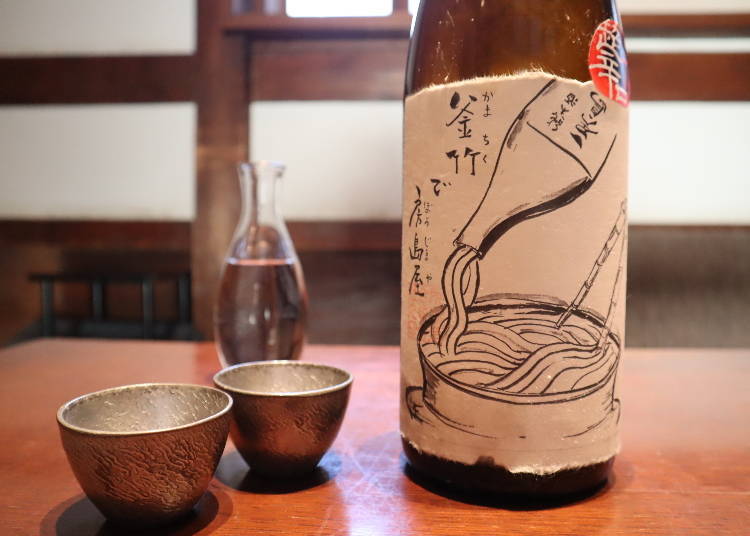
-You have a wide selection of sake and a la carte dishes.
"The sake is probably because I enjoy it myself. We have about 30 kinds of sake at all times, including our own original label, which I believe sake lovers will also enjoy.
"We also make personalized sake recommendations based on the customer's preferences. For foreign customers who enjoy beer, we might recommend a sweeter, more acidic, and slightly carbonated drink. For wine lovers, we recommend the varieties with a fruity and mellow aroma."
Simple and Delicious! Kamaage Udon Noodles
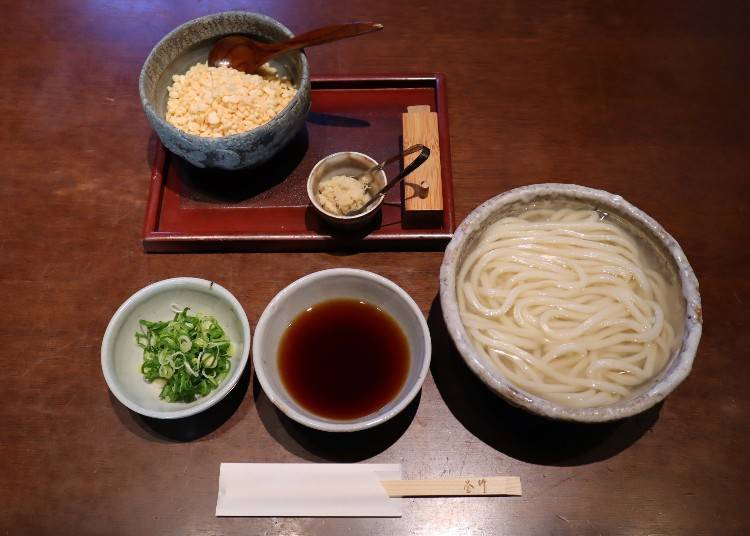
We order the hot kamaage udon right away!
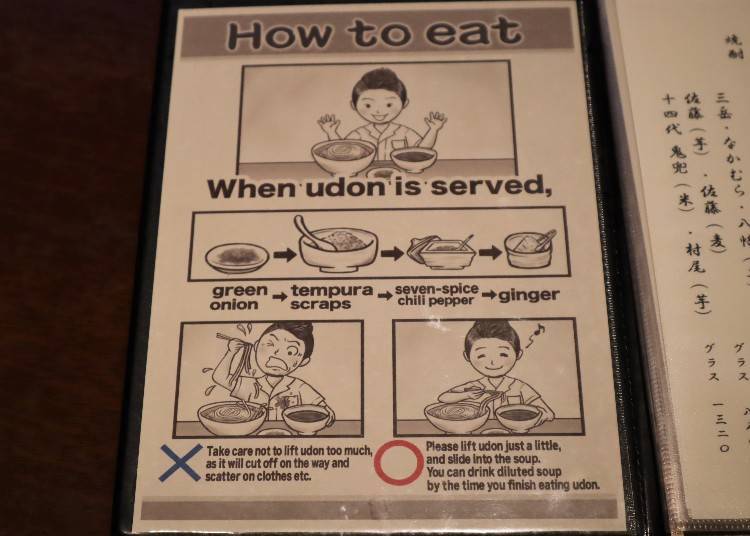
The menu includes English notation for visitors and kamaage udon first-timers, with explanations and illustrations on eating kamaage udon.
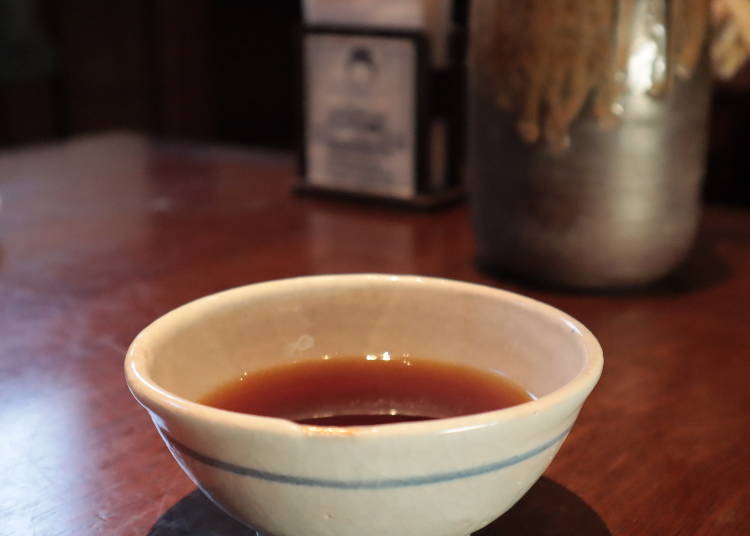
First, dip the noodles in the original dashi stock, made with kelp, sardines, mackerel, two kinds of dried bonito, a soy sauce blend, and sugar. It's smooth and easy to eat, letting you fully enjoy the delicious broth and udon flavor in each bite.
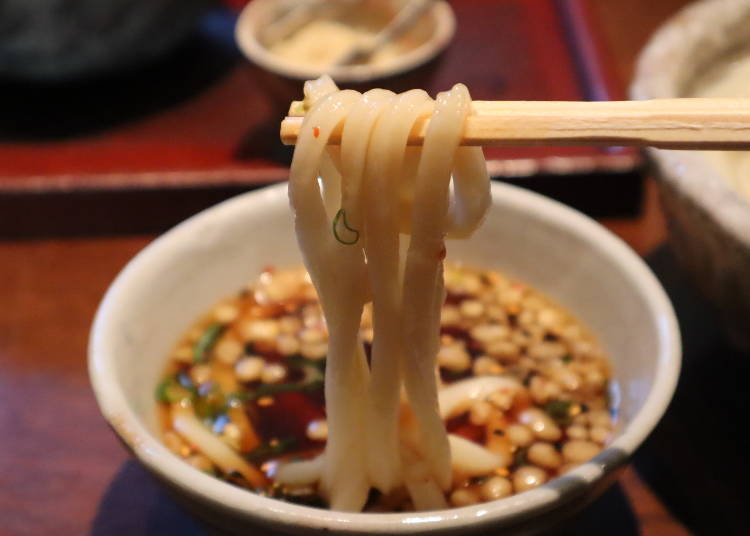
While eating, feel free to add green onions, tempura batter, shichimi pepper, and ginger to your liking to experience a different taste. You may even end up eating more than you planned!
Udon Soup Stock & Specialty Dishes
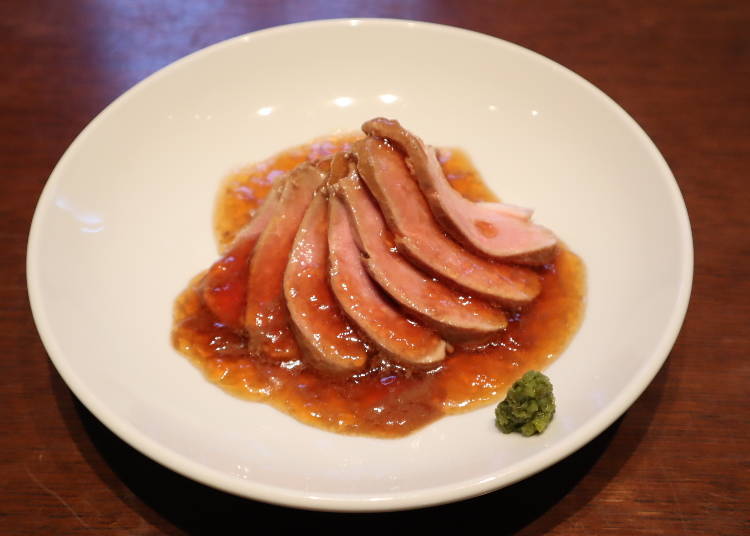
When you come to Kamachiku, be sure to try their sake and a la carte dishes. One of the shop's recommendations is the duck loin. Soaked in a flavorful udon dashi jelly, this is a dish you will only find at Kamachiku.
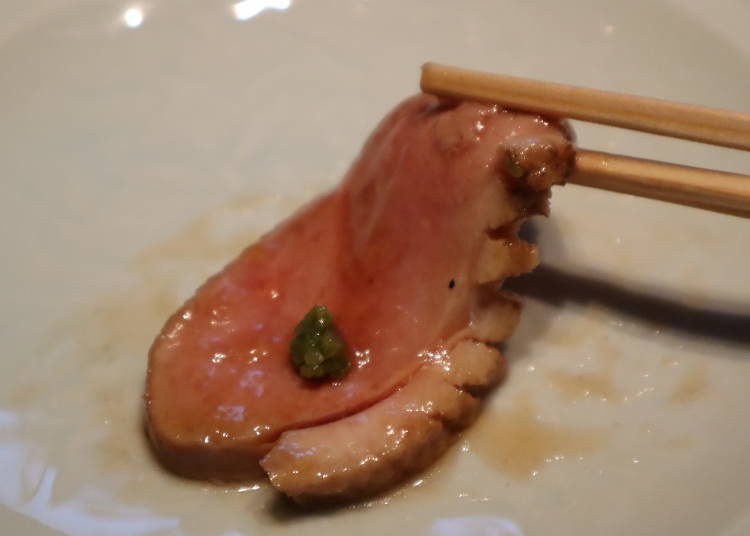

The ingredients for the tempura change seasonally. This satisfying dish is fried in a sesame oil preferred by tempura specialty shops. The batter is light and crispy, bringing out the original taste of the ingredients.
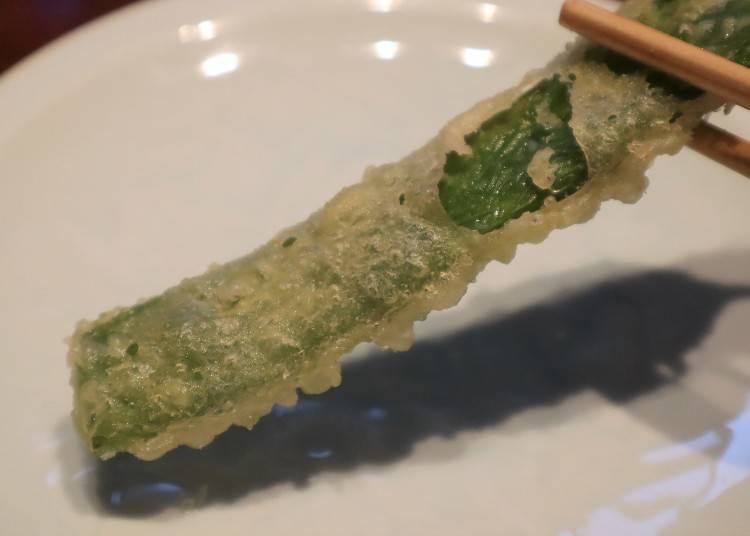
Today's ingredients accompanying the shrimp were string beans, lotus root, eggplant, sweet potato, and squid.
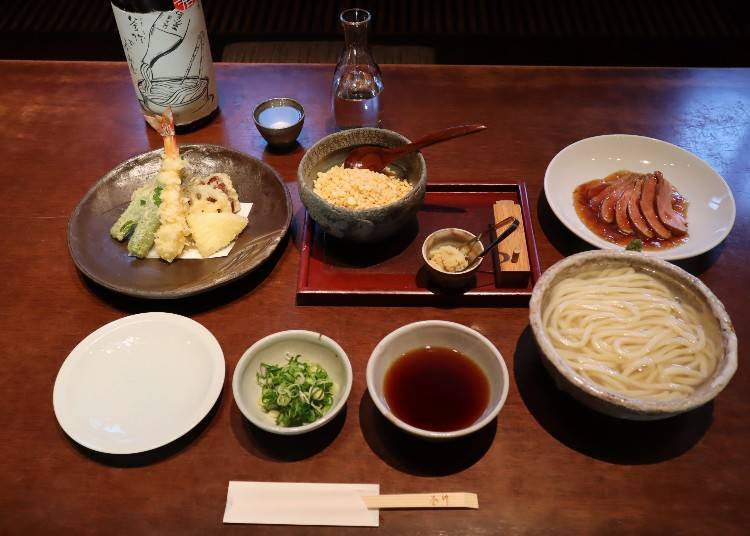
Last up is the kamaage udon, a dish served as an accompaniment to sake, as well as the final dish to end your meal. With this, the udon shop's full course is complete.
Authentic Japanese Cuisine in an Authentic Japanese Atmosphere
If you'd like to enjoy a delicious, authentic Japanese meal in a historical Japanese setting at a reasonable price, then Kamachiku is where it's at. And it's not just the food that draws crowds to this shop.
Visitors also love the company of the shop owner, and his dedication to taste, hospitality, and of course, the customer. For a taste of Japanese flavor, atmosphere, and hospitality that you won't find anywhere else, Kamachiku is the place to go!
Video: Produced by Kamachiku in 2020; information is at the time the video was created.
- Health & Safety Measures
- Indoor disinfection measures taken - Sanitizer installed - Disinfected after each guest leaves - Ventilation measures in place - Coin trays used - Plastic partitions installed - Staff wear masks, gargle, wash hands regularly, and monitor body temperature - Limited capacity/increased space between seats - Entry declined to anyone who is feeling unwell - Guests requested to wear masks and conduct temperature checks
*Information in article as of February 2022
*Business hours subject to change depending on coronavirus situation.
*Measures were taken against coronavirus before and during interviews and photo shoots; masks only removed for photos.
-
Nezu Kamachiku根津 釜竹
- Address 2-14-18, Nezu, Bunkyo Ku, Tokyo 113-0031
- Phone Number 03-5815-4675
Hours:
Tuesday-Saturday: 11:30AM-2:30 / 5:30PM-9:00PM
Sunday: 11:30AM-2:30PM / 5:30PM-8:00PM
Mondays: Closed
*Shop open until udon sells out
Translated by: Krys Suzuki
Miyu is a travel writer and tour conductor with over a decade of experience in developing educational content for working individuals. She has a passion for exploring new cultures and has visited more than 150 cities in around 50 countries. Her goal is to sample great food, experience nature, enjoy historical sites, and bathe in hot springs around the world. Miyu left her corporate job to pursue her passion for travel and now spends over 100 days a year abroad while working as a writer. She promotes the joy of travel, the beauty of Japan, and the diverse cultures of the world by traveling to different parts of Japan and collaborating with inbound tour operators and fellow travel writers.
- Area
- Category
*Prices and options mentioned are subject to change.
*Unless stated otherwise, all prices include tax.
Popular Tours & Activitiess
Recommended places for you
-
Ad

Discover the "Miraculous Forest" in the Heart of Tokyo: The Institute for Nature Study (9 Minutes from JR Meguro Station)
-

Jujutsu Kaisen Takes Over JR East With a Wrapped Shinkansen This Winter
by: Guest Contributor
-
Ad

Complete Guide to Ueno's National Museum of Nature and Science, the Perfect Place to Visit on Rainy Days or With Children
-

First Japan Cherry Blossom 2026 Forecast Announced! Here's When & Where to See Sakura in Japan
-

Strawberries, Style, and Tokyo’s Coolest Neighborhood: Winter Afternoon Tea in Kichijoji
by: Guest Contributor
-

This Winter, Godzilla Takes Over Haneda Airport
by: Guest Contributor
Inspiration for Accommodations
-

Enjoy Mt. Fuji from the Comfort of Your Room! Recommended Ryokan with Mt. Fuji View
-

Stay Near the Cherry Blossoms! Hotels for Cherry Blossom Viewing in Tokyo
-

Family-Friendly Hotels with Free Shuttle to Disneyland: Convenient Access for a Magical Stay
-

Top Ranked Hakone Hotels with Mt. Fuji View: Enjoy Stunning Scenery from Your Private Space
-

Convenient Tokyo Hotels with Airport Shuttle: Ideal for Families and Heavy Luggage
-

Stunning Tokyo Tower View Hotels: Enjoy Spectacular Scenery from Your Private Space
-

Convenient Asakusa Hotels with Kitchens: Ideal for Extended Family Visits
-

Experience Luxury: Hakone's 10 Best Five-Star Accommodations
-

Enjoy Mt. Fuji Autumn Leaves! Top Hotels Near the Popular Autumn Leaves Corridor
-

Experience Hakone Fall Foliage from Your Room with Stunning Views
-

Tokyo Tsukiji|Tsukiji Area Map & Sightseeing Information
-

Udon and Soba
-

Delicious Asakusa Restaurants: Century Old Local Favorites
-

Tokyo Roppongi: 5 Most Amazing Spots at Roppongi Hills and How to Make the Best of Them!
-

Shibuya Crossing: Getting the Best View from the Deck at Magnet by Shibuya109!
-

Asakusa Dining Guide: 3 must-try soba shops in Asakusa!
- #best ramen tokyo
- #what to buy in ameyoko
- #what to bring to japan
- #new years in tokyo
- #best izakaya shinjuku
- #things to do tokyo
- #japanese nail trends
- #what to do in odaiba
- #onsen tattoo friendly tokyo
- #daiso
- #best sushi ginza
- #japanese convenience store snacks
- #best yakiniku shibuya
- #japanese fashion culture
- #best japanese soft drinks



















